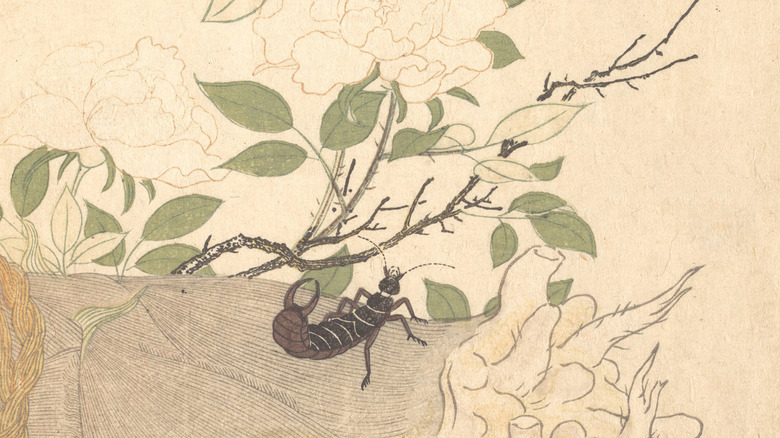The Origin Of The Term Earworm
Kyle Minogue's "Can't Get You Out of My Head" is considered pop music perfection for a reason. Just as the song's title promises, it's almost impossible after hearing it to get the Australian singer's "la, la, las" out of your head. In 2001, the song went to No. 1 in 40 countries, solidifying its place as a catchy earworm (NME).
According to researchers in the field of psychomusicology at Goldsmiths University of London, 90% of people experience an earworm invasion once a week but what does that term mean necessarily and where did it come from? Merriam-Webster explains how a medieval European old wives' tale only partially based in reality morphed into the common term we use to describe an infectious musical phenomenon–the transformation is a linguistic one. It's interesting to note the way in which a bit of entomological fear and epistemological hearsay shaped etymologically over several hundred years.
The Real Deal
So what do a catchy Kylie Minogue song and a tiny insect possibly have in common? If you guessed something along the lines of a bug (or a song) crawling in your ear and getting lodged in your noggin', you would be correct. Earworms, a euphemism for the European earwig insect, are allegedly tiny bugs that squirm into your ear, according to Merriam-Webster.
Britannica states these creatures have tough, beetle-esque exteriors and can exhibit scorpion-like behavior, even to the point of biting with pincers, when provoked. Dark-colored and shiny, some species of earwigs can reach up to 2 inches in length. The nocturnal creature actually prefers plant material instead of ear wax. This belief in ear-obsessed vermin was mostly disproven by the early 19th Century. Empirical evidence showed the little suckers munched ears of corn not human ears or brains. However, Germans continued to use their language variant of the term, ohrwurm, when hit songs in the 1950s and 1960s captured their eardrums (Merriam-Webster).
It's no coincidence that The Beatles took off in Hamburg, Germany before their huge American and UK success, giving those Bavarians good reason to revitalize the dated word (Los Angeles Times). Linguists at Dartmouth are quick to point out that German speakers are happy to borrow words from other languages. Although German language purists in the 17th Century hoped to eliminate loanwords as much as possible, the emergence of national phenomenon like catchy pop music necessitated a term like ohrwurm.
The Stylings of A Musical Earworm
Remember when even rapper Cardi B couldn't get enough of the 2016 hit song "Baby Shark"? Some researchers believe there is a method to this musical madness and it lies in upbeat tempos and a wide range of notes (Today). Just how we can measure the success of a modern-day earworm like "Baby Shark" by its over 10 billion views on YouTube, the Goldsmiths team and researchers at the University of Helsinki are using big data via Twitter to assess sentiments about popular catchy tunes from all over the world (Research Gate).
Earworms identified in the study ranged from Carly Rae Jepsen's 2012 "Call Me Maybe" to the more underground "Bela Legosi's Dead" (released in 1982 by gothic outfit Bauhaus) and demonstrate the ways in which music is a universal language capable of captivating a wide audience, regardless of linguistic barriers (Research Gate).
What to Do When an Earworm Gets Stuck In Your Head
If an earwig manages to defy research findings and actually crawl into any of your orifices, you should probably seek medical attention. But if a song like "Baby Shark" or "Call Me Maybe" is what's bugging you, researchers suggest listening to the song in its entirety or seeking out a new song immediately, especially one that may not be conventionally listened to such as "The Star-Spangled Banner" (Today).
Researchers also believe chewing gum or doing something, pretty much anything else, will eliminate the nuisance shortly. As for Cardi B, when she had "Baby Shark" stuck in her head, she took to Instagram to make a trendy video which then landed her a cameo on the animated Nickelodeon series, "Baby Shark's Big Show," which spawned the hit song (Billboard). Perhaps the show's writers should consider an under-the-sea earwig character to capitalize off the shows unprecedented earworm success.



